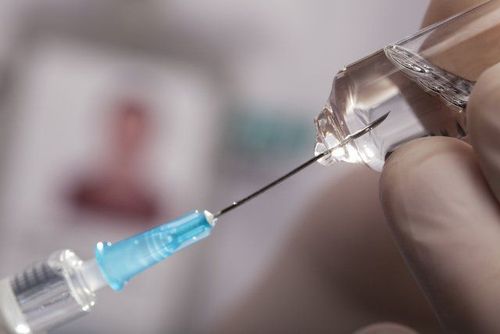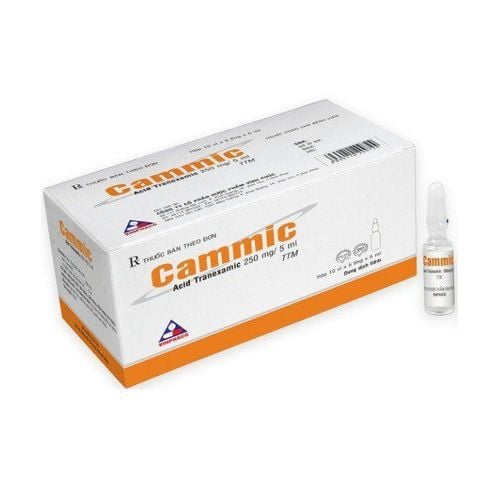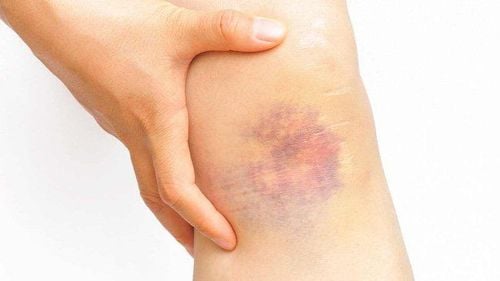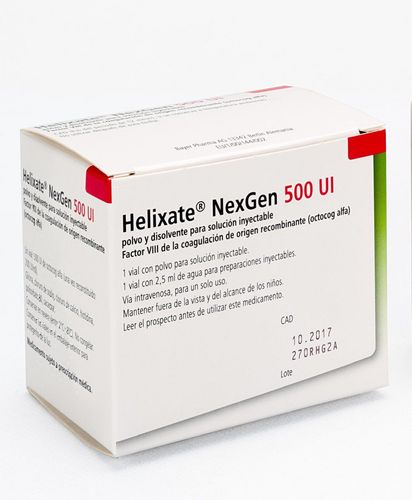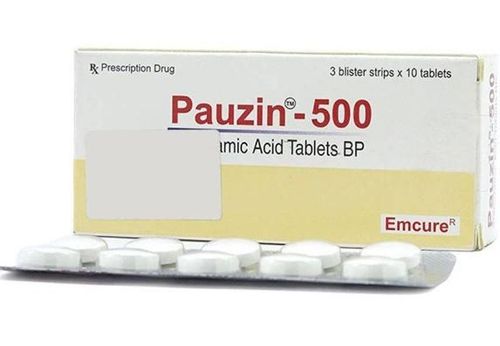This is an automatically translated article.
Hemophilia is a rare blood clotting disorder in which the patient's blood often lacks one or more clotting factors, making it difficult to stop bleeding on its own. This is especially dangerous for people with hemophilia, especially in the case of trauma, internal bleeding...1. What is hemophilia?
Hemophilia, also known as hemophilia, is a rare disorder in which a person's blood does not clot as it should because of a lack of a clotting factor in a chain of 12 factors that help blood clot. If you have hemophilia, the patient may bleed for a long time, and it will be more difficult to stop bleeding after an injury than the average person.Hemophilia is a disease that prevents blood from clotting properly. The process of forming a blood clot helps to prevent bleeding after an injury. If clotting does not occur, a wound can bleed a lot.
Bleeding can be in:
External: on the outer surface of the body, where it is visible. Inside: on the inside of the body, where it cannot be seen. Bleeding inside a joint (such as a knee or hip joint) is common in children with hemophilia. Hemophilia is an inherited disorder, meaning it is the result of a genetic change that is inherited from a child's parents or occurs during development in utero. However, about 30% of people with the disease do not have a family history of the disease, so they may have the disease because of a genetic mutation.
Hemophilia usually affects boys, with an incidence of 1 case in every 5000 - 10,000 babies. Female carriers of the gene rarely develop the condition, but like carriers, they can pass the gene on to their children.
Hemophilia is not contagious, therefore, it is not contagious from an infected person to a healthy person.
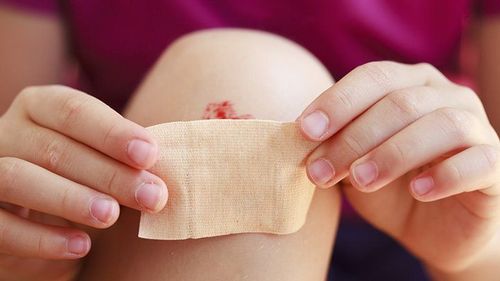
Người mắc bệnh Hemophilia khi bị thương sẽ chảy máu lâu hơn bình thường
2. Causes of Hemophilia
Hemophilia is divided into three types based on the type of clotting factor deficiency:Hemophilia A: deficiency of factor VIII - the most common disease Hemophilia B: deficiency of factor IX - the second most common disease Hemophilia C: Factor XI deficiency - symptoms are usually milder than the other two. Hemophilia A is the most common form of the disease. One in 5,000 to 10,000 men worldwide has hemophilia A. Hemophilia B is less common, and it affects 1 in 20,000 to 34,5000 men worldwide.
Normally when bleeding, the body will clump together blood cells to form a clot to help stop the bleeding. Blood clotting is triggered by certain factors. Hemophilia occurs when a person is deficient in one of these clotting factors.
There are several types of hemophilia and most forms are inherited. However, about 30 percent of people with hemophilia have no family history of the disorder. In these people, a spontaneous mutation occurs in a gene associated with hemophilia.
Acquired hemophilia is a rare condition that occurs when a person's immune system attacks clotting factors such as:
Pregnancy Autoimmune disease Multiple sclerosis Genetics Hemophilia In the most common type of hemophilia, the faulty gene is located on the X chromosome. Everyone has two sex chromosomes, one from their father and one from their mother. Daughters inherit one X chromosome from their mother and one X chromosome from their father, and sons receive one X chromosome from their mother and one Y chromosome from their father. This means that hemophilia almost always occurs in boys and is passed from mother to child through one of the mother's genes.
Most women with the defective gene are simply carriers and have no signs or symptoms of hemophilia. But some carriers may experience bleeding symptoms if their clotting factors are moderately reduced.
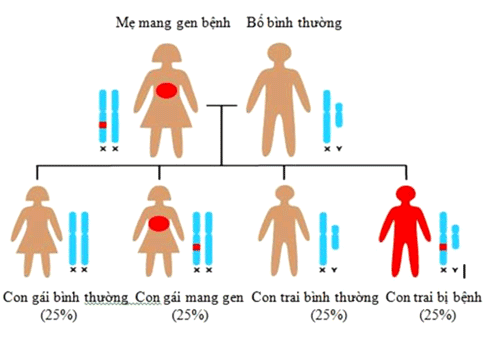
Hầu hết trong các trường hợp gen lỗi nằm trên nhiễm sắc thể X vậy nên bệnh hầu hết xảy ra ở con trai và di truyền từ mẹ sang con
3. Mechanism of formation of hemophilia
In most cases when we get a cut, the body has a defense mechanism. Sticky blood cells called platelets travel to the site of bleeding and form a stopper at the cut. This is the first step in blood clotting.Once the platelets have made a plug, they release chemicals that attract more platelets and also activate proteins in the blood called clotting factors. These proteins mix with platelets to form fibers that make the blood clot stronger and stop bleeding.
Hemophilia is an inherited genetic disease, but with good treatment and care, the patient can still have a normal life.
Please dial HOTLINE for more information or register for an appointment HERE. Download MyVinmec app to make appointments faster and to manage your bookings easily.





